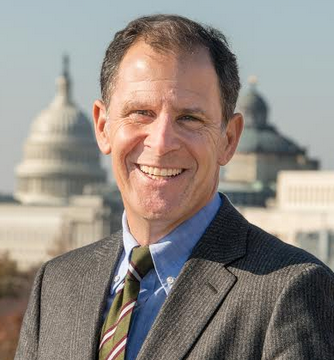Modern Regulations for 21st Century Communications Networks
Efforts to modernize federal regulations are too often viewed politically through a red or blue filter – either long overdue or a reckless abdication of government responsibility.

Reasonable people certainly agree that tough regulations and rigorous oversight are essential to protecting the nation’s safe food supply. Who can argue that government has a responsibility to ensure we drink clean water and breathe clear air? Requiring inspection and routine monitoring of commercial aviation is a good use of taxpayer money.
But the value of regulation is far less evident when you look at the current telecommunications landscape where many providers are operating under rules established a generation ago (or longer) when the voice and broadband marketplace were far less competitive.
In 1996, Congress wisely instructed the Federal Communications Commission to regularly “review all regulations…that apply to the operations or activities of any provider of telecommunications service” and repeal rules found “no longer necessary in the public interest.”
The current FCC is appropriately heeding that directive with a thorough agency review of legacy communications regulations with a sharp focus on modernization and parity.
As the FCC explained, streamlining and other regulatory reforms “enable carriers to more rapidly shift resources away from maintaining outdated legacy infrastructure and services and towards the construction of next-generation broadband networks bringing innovative new broadband services.“
Indeed, monopoly era regulations and expensive and overwrought record-keeping rules designed for the dial-up era do not improve modern broadband service or drive innovation for consumers. Over time, these costs crowd out investment and commitments to build, upgrade and maintain 21st century broadband infrastructure. These costs are disproportionately burdensome for small and rural providers competing to provide next generation service.
The smarter way to stay on top of the multichannel video marketplace. Sign up below.
Last year the FCC modernized the rates wireline providers pay to attach equipment to utility poles (in some cases paying rates 1,000 percent higher than cable companies attaching to the same pole). The net effect of bringing parity and fairness to the pole attachment process will both increase broadband deployment and the availability of fiber that will carry 5G network traffic.
Here is another area where the FCC could make more progress.
In 1996, Congress required incumbent local exchange carriers (ILECs) to unbundle and resell portions of their networks to upstart companies at discounted and government-set rates. These network-sharing rules applied exclusively to ILECs in an era before there was substantial competition from facilities-based rivals. Twenty-three years later that expected competition is here. (ILEC’s share of residential local voice markets fell from nearly 100 percent to only 11 percent of U.S. households by the end of 2018.)
Yet, these old-school regulations remain in place.
USTelecom has petitioned the FCC to phase out these outdated unbundling and resale requirements on providers, in favor of allowing the competitive and dynamic marketplace to set terms, a change that will reduce costs for consumers, create jobs and unlock new investment.
If we are to meet the communications needs of this and future generations with the world’s most reliable broadband infrastructure, regulations and incentives must keep up with the lightning speed of technology and innovation.
That common sense objective requires Congress and the FCC to regularly review the rules for telecommunications service and providers, and when appropriate eliminate or modify requirements that have outlived their overall utility and value to the common good.
Jonathan Spalter is president and CEO of USTelecom – The Broadband Association.
